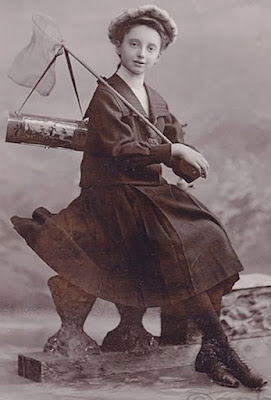Wednesday, January 31, 2024
Herbarium #11: Wood Bine For the Tool of the Trade
Wednesday, January 24, 2024
Civil War Quilts For Sale
A couple of weeks ago I typed the words Civil War Quilt in ebay's search feature and got 54 hits; about half were reproductions and repro fabrics (good place to buy some.)
But 26 were purported to be quilts either from the Civil War era, in "Civil War colors" or with souvenirs like ribbons or scraps of Civil War uniforms.
Eleven of those seemed somewhat accurate.
Fifteen seemed far-fetched or downright manipulative. The worst offender this Double Wedding Ring--- "vintage Civil War"---Do not pay $422 for a quilt made about 30 years ago in China.
Wednesday, January 17, 2024
Mary Alice Catlett Vance's Civil War
Mary Alice Catlett was born during the Civil War, the third of the family. Father John Pinkney Catlett was a horse and mule trader in Anderson, South Carolina, who never enlisted in the Confederate army (Tennessee-born and rumored to be a Union sympathizer.)
Mary Alice married into an important Carolina political family. In 1879 she wed David Mitchell Vance (1852-1926?) of Asheville, North Carolina, son of Confederate General Robert Brank Vance and nephew of North Carolina's Civil War Governor Zebulon Vance.
https://barbarabrackman.blogspot.com/2020/12/alice-catlett-vance-her-quilt.html
https://barbarabrackman.blogspot.com/2020/12/alice-catlett-vance-more-family-quilts.html
"No person shall ... hold any office, civil or military, under the United States, or under any state, who, having previously taken an oath, as a member of Congress, or as an officer of the United States, or as a member of any State legislature, or as an executive or judicial officer of any State, to support the Constitution of the United States, shall have engaged in insurrection or rebellion against the same."
One could see the need for such an Amendment summarized in two opinions published in Evansville, Indiana newspapers in 1867 and 1868:
Eventually Zeb Vance returned to political office.
The pattern in the quilt, while unusual, is something of a regional phenomenon. Those four lobes are pieced or appliqued around a typical post-Civil-War favorite design of wheels with spiky points and skillful patchwork in solid fabrics.
Wednesday, January 10, 2024
Washington Whirlwind #1: Whirlwind
The Block
In 2001, Tad Lincoln's Father was reprinted by the University of Nebraska Press's Bison Books.



















































